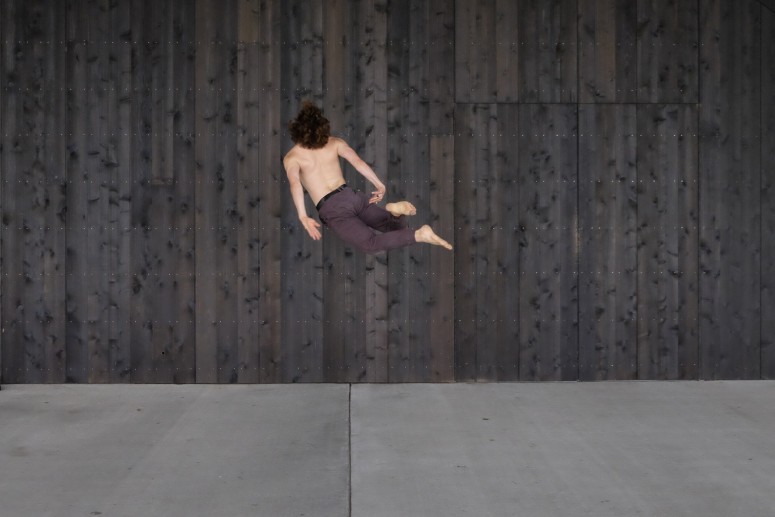Daring Dance

From Kenyon News - October 3, 2014
Fearlessly physical and poetic, the people behind “boomerang” have been referred to as the “punk Mozarts of dance.” Assistant Professor of Dance Kora Radella, Matty Davis ’12 and Adrian Galvin ’12 founded the nonprofit dance and performance company in New York City with support from playwright Will Arbery ’11.
Radella is the choreographer and shares the artistic directorship with Davis, boomerang’s principal performer. “It’s our project together,” Radella said of the group’s collaborative creative process.
Although boomerang — that’s right, with a small ‘b’ — primarily performs in New York City and other metropolitan centers, Davis has taken some of his work to Death Valley, the Great Smoky Mountains and Oklahoma baseball fields. Last winter, he performed boomerang’s work at the United Nations in New York. In fact, fans never know where boomerang might perform: in a church, art gallery or theater. The company’s fondness for alternative spaces reflects the daring, idiosyncratic nature of the group.
The Pittsburgh Post-Gazette wrote of a performance this summer at the Three Rivers Arts Festival: “What stood out was the choice to not churn out tricks merely for the sake of doing them. Movements were grounded in meaning that often times was sensed in the gut rather than grasped by the mind.”
The athleticism in boomerang’s pieces takes full advantage of its dancers’ backgrounds. Davis was an NCAA Academic All American long-distance runner and Galvin an ultimate Frisbee player at Kenyon. The company also makes use of other abilities of its performers: Davis is a visual artist and jewelry-maker, Galvin a musician and Arbery a writer and actor.
Radella describes her style as “awkward grace” that delights in being on the edge of control. “I tend to be vigorous in my movement,” she said. “There is a certain amount of daring in what we do, but there also is quite a lot of intimate vulnerability and real humanness.
“Even in New York City, audiences are surprised by the raw beauty of our work. We’re not doing normal codified dance movements.”
Added Davis, “We’re aiming to cross disciplines, break down certain limiting barriers. And contribute a new, meaningful voice to dance and performance.”